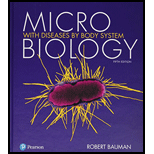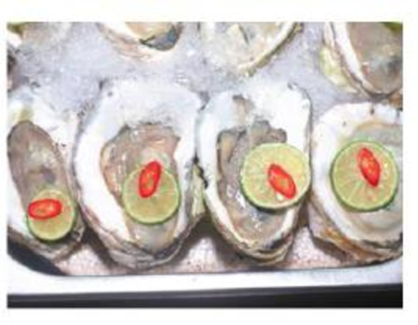
Raw Oysters and Antacids: A Deadly Mix?

The highly acidic environment of the stomach kills most bacteria before they cause disease. One bacterium that can slightly tolerate conditions as it passes through the stomach is Vibrio vulnificus—a bacterium commonly ingested by eating raw tainted oysters. The bacterium cannot be seen, tasted, or smelled in food or water.
V. vulnificus is an emerging pathogen and a growing cause of food poisoning in the United States: it triggers vomiting, diarrhea, and abdominal pain. The pathogen can also infect the bloodstream, causing life-threatening illness characterized by fever, chills, skin lesions, and deadly loss of blood pressure. About 50% of patients with bloodstream infections die. V. vulnificus especially affects the immunocompromised and people with long-term liver disease.
Researchers have discovered that taking antacids may make people more susceptible to becoming ill from V. vulnificus. They found that antacids in a simulated gastric environment significantly increased the survival rate of V. vulnificus.
- 1. Why are patients who take antacids at greater risk for infections with V vutnificus?
- 2. Will antacids raise or lower the pH of the stomach?
- 3. Other than refraining from antacids, what can people do to reduce their risk of infection?
Learn your wayIncludes step-by-step video

Chapter 2 Solutions
Microbiology with Diseases by Body System (5th Edition)
Additional Science Textbook Solutions
Organic Chemistry (8th Edition)
Physics for Scientists and Engineers: A Strategic Approach, Vol. 1 (Chs 1-21) (4th Edition)
Anatomy & Physiology (6th Edition)
Microbiology: An Introduction
Applications and Investigations in Earth Science (9th Edition)
Campbell Biology (11th Edition)
- Identify the indicated tissue? (stem x.s.) parenchyma collenchyma sclerenchyma ○ xylem ○ phloem none of thesearrow_forwardWhere did this structure originate from? (Salix branch root) epidermis cortex endodermis pericycle vascular cylinderarrow_forwardIdentify the indicated tissue. (Tilia stem x.s.) parenchyma collenchyma sclerenchyma xylem phloem none of thesearrow_forward
- Identify the indicated structure. (Cucurbita stem l.s.) pit lenticel stomate tendril none of thesearrow_forwardIdentify the specific cell? (Zebrina leaf peel) vessel element sieve element companion cell tracheid guard cell subsidiary cell none of thesearrow_forwardWhat type of cells flank the opening on either side? (leaf x.s.) vessel elements sieve elements companion cells tracheids guard cells none of thesearrow_forward
- What specific cell is indicated. (Cucurbita stem I.s.) vessel element sieve element O companion cell tracheid guard cell none of thesearrow_forwardWhat specific cell is indicated? (Aristolochia stem x.s.) vessel element sieve element ○ companion cell O O O O O tracheid O guard cell none of thesearrow_forwardIdentify the tissue. parenchyma collenchyma sclerenchyma ○ xylem O phloem O none of thesearrow_forward
- Please answer q3arrow_forwardRespond to the following in a minimum of 175 words: How might CRISPR-Cas 9 be used in research or, eventually, therapeutically in patients? What are some potential ethical issues associated with using this technology? Do the advantages of using this technology outweigh the disadvantages (or vice versa)? Explain your position.arrow_forwardYou are studying the effect of directional selection on body height in three populations (graphs a, b, and c below). (a) What is the selection differential? Show your calculation. (2 pts) (b) Which population has the highest narrow sense heritability for height? Explain your answer. (2 pts) (c) If you examined the offspring in the next generation in each population, which population would have the highest mean height? Why? (2 pts) (a) Midoffspring height (average height of offspring) Short Short Short Short (c) Short (b) Short Tall Short Tall Short Short Tall Midparent height (average height of Mean of population = 65 inches Mean of breading parents = 70 inches Mean of population = 65 inches Mean of breading parents = 70 inches Mean of population = 65 inches Mean of breading parents = 70 inchesarrow_forward
 Human Heredity: Principles and Issues (MindTap Co...BiologyISBN:9781305251052Author:Michael CummingsPublisher:Cengage Learning
Human Heredity: Principles and Issues (MindTap Co...BiologyISBN:9781305251052Author:Michael CummingsPublisher:Cengage Learning





